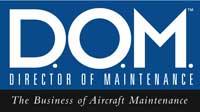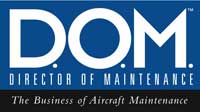
The Owner-Assisted Annual: How Much Assistance Should You Let The Aircraft Owner Provide?

In this month’s article, I would like to continue with the “inspection” theme that has developed during the last several issues and talk about owner-assisted annual inspections. Many shops allow an aircraft owner to assist with an annual inspection to help reduce the cost of the inspection for the owner. This also provides an opportunity for the owner to learn more about the aircraft — But how much help is the aircraft owner permitted to provide?
Before I answer that question, some background might be helpful. As we have discussed in past articles, 14 C.F.R. § 91.409(a) requires that an aircraft must undergo an annual inspection every 12 calendar months or sooner in order for that aircraft to be airworthy. The regulations also provide the scope of the annual inspection in 14 C.F.R. Part 43, Appendix D, which lists all of the items that must be inspected and whose airworthiness must be confirmed.
However, the regulations do not allow just anyone to perform an annual inspection. 14 C.F.R. § 65.95 only affords that privilege to a mechanic who also holds an inspection authorization. That individual, who we will refer to as “the IA,” is ultimately responsible for returning the aircraft to service after completion of the annual inspection. More specifically, the FAA’s position is that only the IA may inspect and make airworthiness determinations for each of the items listed in Appendix D (b) through (j) when performing an annual inspection, and only the IA may approve the aircraft for return to service after the annual inspection. The FAA considers these items to be non-delegable.
What does this leave for the aircraft owner? Not much, since the aircraft owner is not permitted to assist with the inspection and airworthiness determination of any of the items in Appendix D (b) through (j). However, because paragraph (a) of Appendix D references removing or opening all necessary inspection plates, access doors, fairings and cowlings “before that inspection” and also cleaning the aircraft and engine, the FAA views those items as preliminary tasks that are not inspection items under Appendix D. As a result, the FAA considers those tasks to be delegable. This means that the IA who is performing the annual inspection may allow an aircraft owner to perform those preliminary tasks under the IA’s supervision.
Interestingly, the FAA’s rationale also applies to mechanics who do not hold an inspection authorization. Even though a mechanic without inspection authorization may perform all of the items in Appendix D (b) through (j) during a 100-hour inspection or as needed, only an IA may perform these items in connection with an annual inspection. And only an IA may approve the aircraft for return to service after completion of an annual inspection.
Thus, depending upon the aircraft, the owner’s assistance may be minimal or it may be quite involved in removal or opening of all necessary inspection plates, access doors, fairings and cowlings, cleaning the aircraft and engine. Additionally, the IA’s comfort level with the aircraft owner’s knowledge and experience may also dictate that he or she supervise the owner’s performance of the items in paragraph (a).
Remember that if you are the IA performing the annual inspection with owner assistance, you have the obligation of personally inspecting each item, determining that item’s airworthiness and approving the aircraft for return to service if appropriate. If you permit the aircraft owner to assist with the inspection or airworthiness determination for any of the items in Appendix D (b) through (j) and then you return the aircraft to service, that would likely be a violation of the regulations, including 14 C.F.R. § 43.12(a)(1) involving a false entry in a maintenance record. The potential sanctions for such violations range from suspension of your mechanic certificate or inspection authorization up to revocation of all airmen certificates. Don’t let that happen to you.
 Greg Reigel is an aviation attorney, author and pilot. He holds a commercial pilot certificate with an instrument rating and can fly single-engine land and sea, as well as multi-engine land aircraft. His practice concentrates on aviation litigation, including insurance matters and creditor’s rights, FAA certificate actions and transactional matters. He represents clients throughout the country on aviation law matters. He also an adjunct professor at Minnesota State University - Mankato where he teaches aviation law and at William Mitchell College of Law where he is an instructor in the advocacy course. He can be reached via e-mail at greigel@aerolegalservices.com.
Greg Reigel is an aviation attorney, author and pilot. He holds a commercial pilot certificate with an instrument rating and can fly single-engine land and sea, as well as multi-engine land aircraft. His practice concentrates on aviation litigation, including insurance matters and creditor’s rights, FAA certificate actions and transactional matters. He represents clients throughout the country on aviation law matters. He also an adjunct professor at Minnesota State University - Mankato where he teaches aviation law and at William Mitchell College of Law where he is an instructor in the advocacy course. He can be reached via e-mail at greigel@aerolegalservices.com.
© 2015 All rights reserved.
